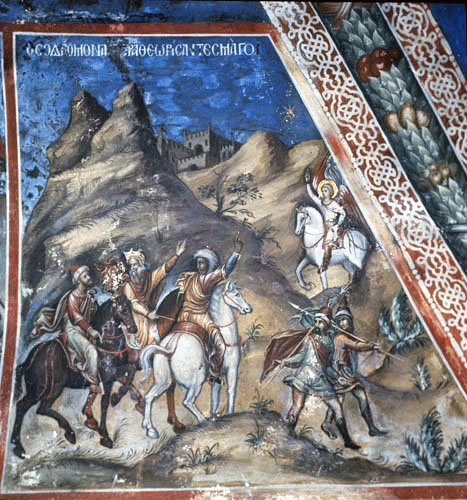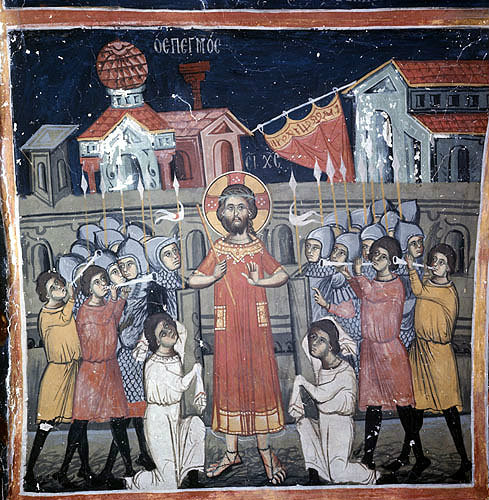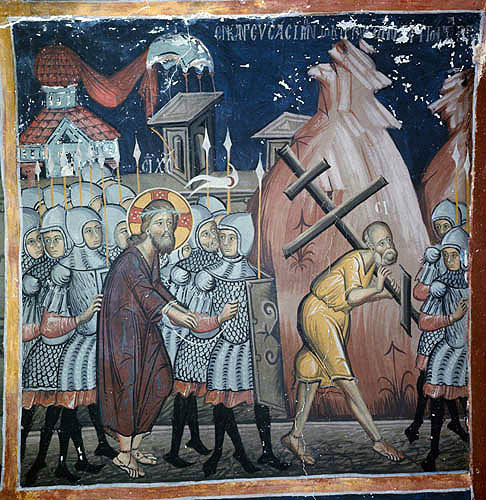Soldiers in the
Frescoes in the Church of St Heracleidius at the Monastery of St John Lampadistis, Kalopanayiotis, Cyprus, c.1400AD
 The Magi follow the star, Italo-Byzantine style 15th century mural in Latin Chapel Monastery Church of St John Lampadistis, Kalopanayiotis, Cyprus. |
ΌΕΠΕΓΜΌΕ Cyprus, Kalopanayiotis, the Church of St Heracleidius in the Monastery of St John Lampadistis, the mocking. |
 Cyprus, Kalopanayiotis, the Church of St Heracleidius in the Monastery of St John Lampadistis, the Via Crucis, Simon of Cyrene carrying the cross. |
 The Crucifixion, Kalopanayiotis, Cyprus, Church of St Heracleidius in the Monastery of Saint John Lampadistis. |